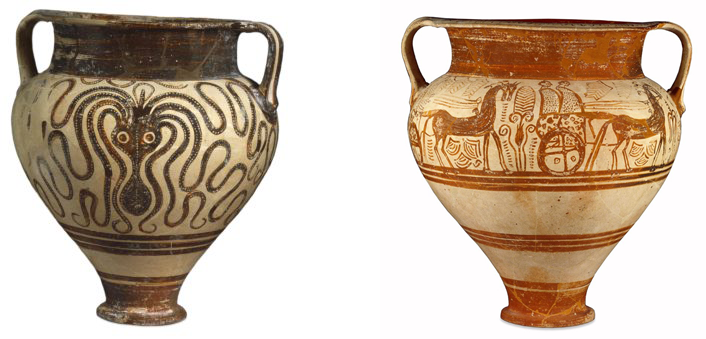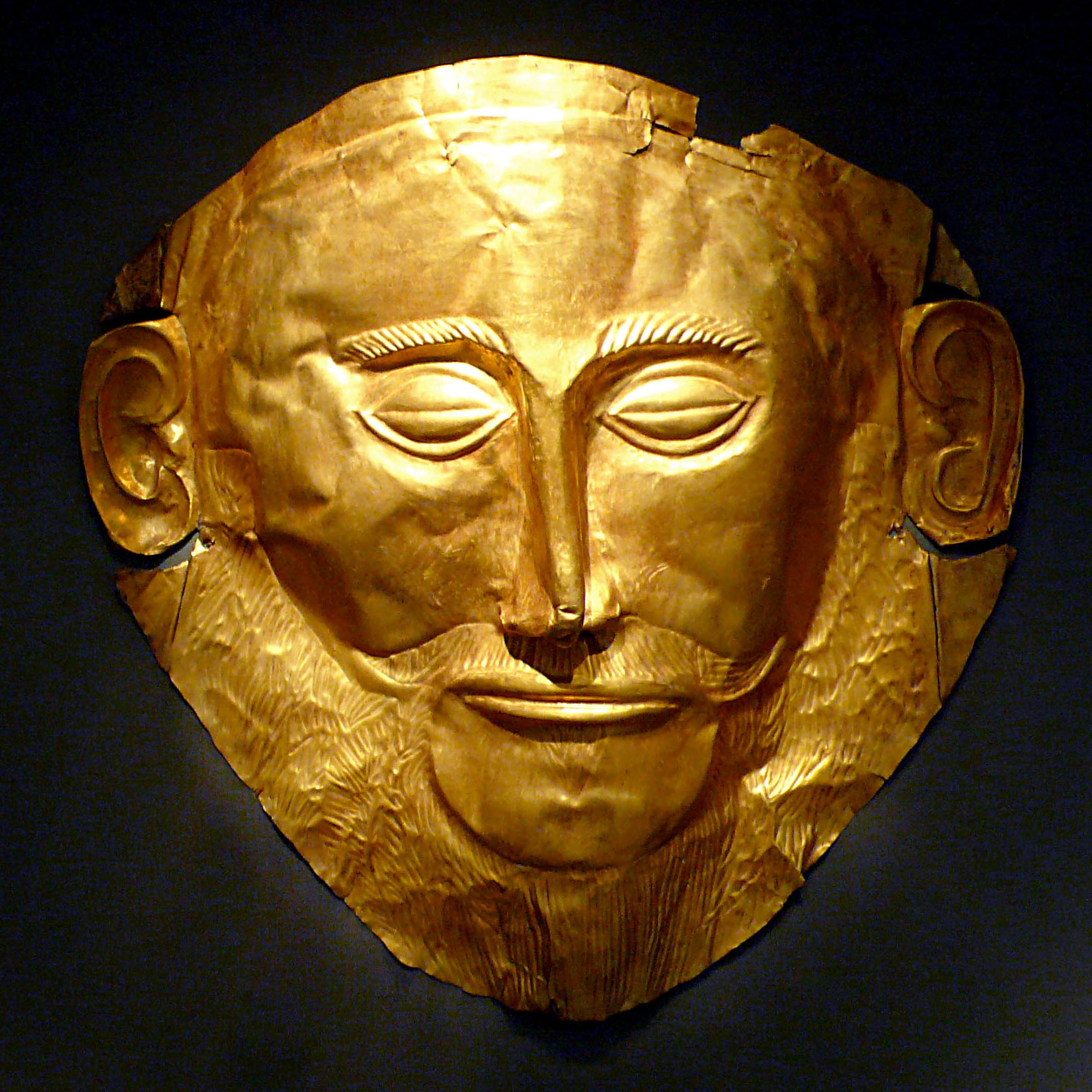Introduction
The profound influence of Ancient Greece on human civilisation is undeniable, inspiring generations and geographies. Among the various facets of this remarkable civilisation, art stands and shines advocating the power of creative expression. Greek art has left a mark on architecture, sculpture, painting, pottery, and jewellery design, shaping the very essence of artistic sensibility and innovation. From the dawn of antiquity to the modern day, the enduring allure of Greek artistic styles continues to inspire.
As we jump on a journey through the annals of history, we will delve into the rich tradition of Greek art, which spans seven distinctive eras, each marked by its own unique characteristics. From the vivid depictions of daily life in the Minoan/Mycenaean Era to the monumental achievements of the Hellenistic Era, we will explore the artistic evolution that has shaped not only Greece but also the entire world.
Imagine standing amidst the towering columns of a Greek temple, gazing upon the intricately carved friezes that tell stories of gods and heroes. Picture yourself in the presence of sculpted masterpieces that capture the essence of human form and emotion with unparalleled grace. Envision the vibrant colours and geometric patterns adorning ancient pottery, narrating the tales of a bygone era. These are but a few glimpses into the treasure trove of Greece that continues to inspire awe and admiration.
Today, whether you stroll through the bustling streets of your nearest city, explore the collections of a museum, or admire the craftsmanship of a contemporary jeweler or potter, you can witness the enduring legacy of Ancient Greek art. It serves as a constant reminder that the creative spirit knows no bounds, transcending generations and cultures.
Join us as we explore the journey through the seven distinct eras of Greek art, each a chapter in the grand narrative of human creativity and innovation. From the advanced palace civilisation of the Minoans to the height of Athenian artistic excellence in the Classical Era, each era paints a vivid portrait of the cultural, social, and artistic evolution of the Greeks. Through the ages, their art has not only reflected their own beliefs and aspirations but has also contributed to a global heritage that continues to inspire and enrich our lives.
1. The Minoan/Mycenaean Era (circa 2000BC-1500BC)
The Minoans, hailing from Knossos, Crete, were a highly advanced civilisation with a written language. Through their art, they vividly documented their daily lives. Initially farmers, they thrived on maritime trade, amassing wealth and sophistication. Minoan art, known for its smooth lines and vibrant colours, departed from the two-dimensional depictions of their Egyptian neighbors, embracing three-dimensional representations. Their art portrays a leisurely society that worshipped the snake goddess and the bull, recognizing the sea and soil as sources of their prosperity. Bull vaulting, a sport leading to bull sacrifices, is evident in many frescoes. Realistic depictions of marine life, birds, fish, and flowers also adorn their art.

2. The Mycenaean Era (circa 1600BC-1100BC)
Unlike the Minoans, the Mycenaeans, residing on the Greek mainland, came into their artistic prime during the late Bronze Age. Before this era, mainland art was primarily focused on utilitarian objects and tools. Mycenaeans were skilled warriors and astute traders, influenced by the Minoan art but developing their unique style. With thriving civilisations, they became master stonemasons, constructing grand palaces housing fine art. Artisans crafted items like drinking vessels, weapons, jewelry, and masks, often embellished with gold carvings. Notably, small terracotta figurines, believed by some to represent goddesses, are abundant in this period.

3. The Sub-Mycenaean and Proto- Geometric Eras (circa 1100BC-900BC and circa 1025BC-900BC)
Following the fall of Troy around 1200BC, the Mycenaean civilisation began to decline due to incessant wars and invasions from the north. This ushered in the Sub-Mycenaean Era, characterised by minimal artistic innovation. The subsequent Proto-Geometric Era saw a cultural and creative revival. Pottery experienced a renaissance with the invention of the potter’s wheel, featuring vases with broad bellies adorned with horizontal lines and simple shapes.
4. The Geometric Era (circa 900-700 BC)
The Geometric Era is named for the geometric patterns prevalent in ceramic vases unearthed by archaeologists. Greek artisans transformed geometric shapes into controlled, rhythmic designs. Sculpture made its debut during this era with small geometric votive forms as offerings to gods. Artists experimented with various mediums like solid casting, cold working, and gem engraving. Oriental influences began to appear, with designs like Oriental eyes and the emergence of hybrid creatures such as the Sphinx, Chimeras, Gorgons, and Griffins. However, stone sculpture had not yet found its place.

5. The Archaic Era (circa 700BC-450BC)
The Archaic Era marked a significant shift in Greek art. Inspired by Egyptian post and lintel architecture and large-scale statues, Greek artists began creating male statues reminiscent of Egyptian gods and pharaohs, with the distinct difference of Greek males being depicted nude. Greeks celebrated ideal masculinity and fully clothed femininity (the kore). These statues, commissioned primarily by aristocrats, embodied the ideal rather than specific individuals. Notably, this era saw the emergence of “black figure pottery” and its evolution into the famous “red figure ware,” portraying daily Greek life and mythology.


6. The Classical Era (circa 450BC-323BC)
The pinnacle of Greek art, known as the “Great Fifty Years,” occurred in the Classical Era. Under the leadership of Pericles, who sought to make Athens the most powerful city-state, art flourished. Athens became the center of democracy, philosophy, and art. Sculptures became more lifelike with changing hairstyles and relaxed, twisting poses. The Greeks believed gods resembled humans, and their sculptures reflected idealized human forms. The establishment of the Doric Temple and the rise of “black figure pottery” paved the way for the renowned “red figure ware.” Athens’ dominance continued until 404BC, after which inter-state wars led to an artistic decline.

7. The Hellenistic Era (circa 323-31BC)
The Hellenistic Era, initiated by Philip of Macedon and propelled by his son, Alexander the Great, extended Greek political and cultural influence from the Greek mainland to India. Art shifted from religious depictions to include curiosities such as children, drunkenness, and erotica. Public sculptures of rulers became oversized and exaggerated, reflecting the power associated with Hellenistic rule. The era gave birth to renowned sculptures like the Venus de Milo.

Conclusion
The genius of Ancient Greek art lies in its ability to take simple ideas, such as the human form, and elevate them to perfection. The Greeks accomplished this feat with confidence and wealth, leaving a lasting legacy. While the Hellenistic Empire eventually fell, it was the Romans who adapted and continued to develop classical Greek art for the ages. Through seven distinct eras, Ancient Greek art has endured as a testament to human creativity and its ability to transcend time and place.
Paintings of Monkeys Disclose the Indo-Greek Connections in Indus Valley Periods

Contributor





